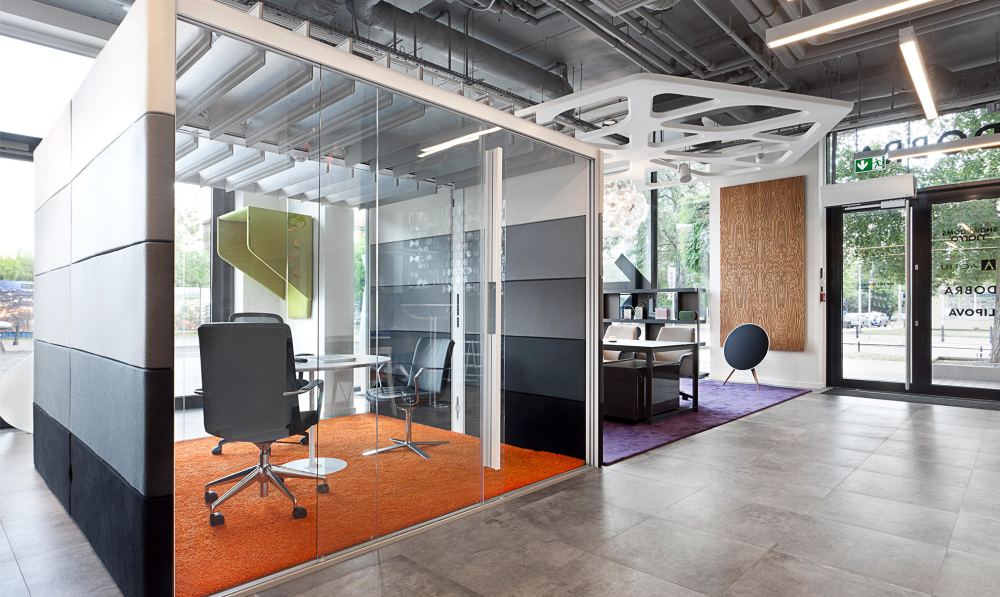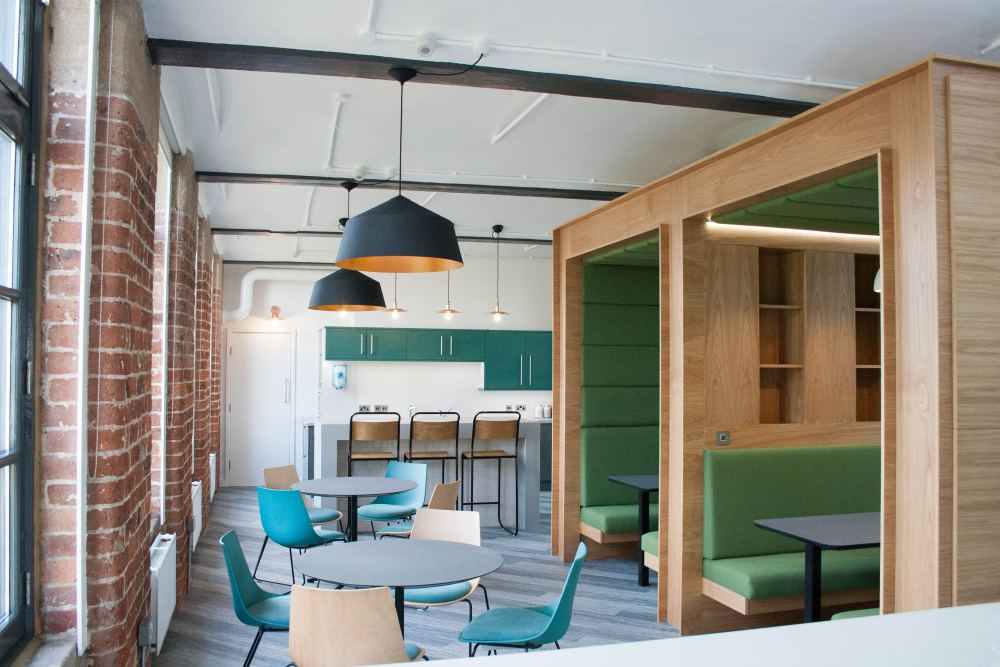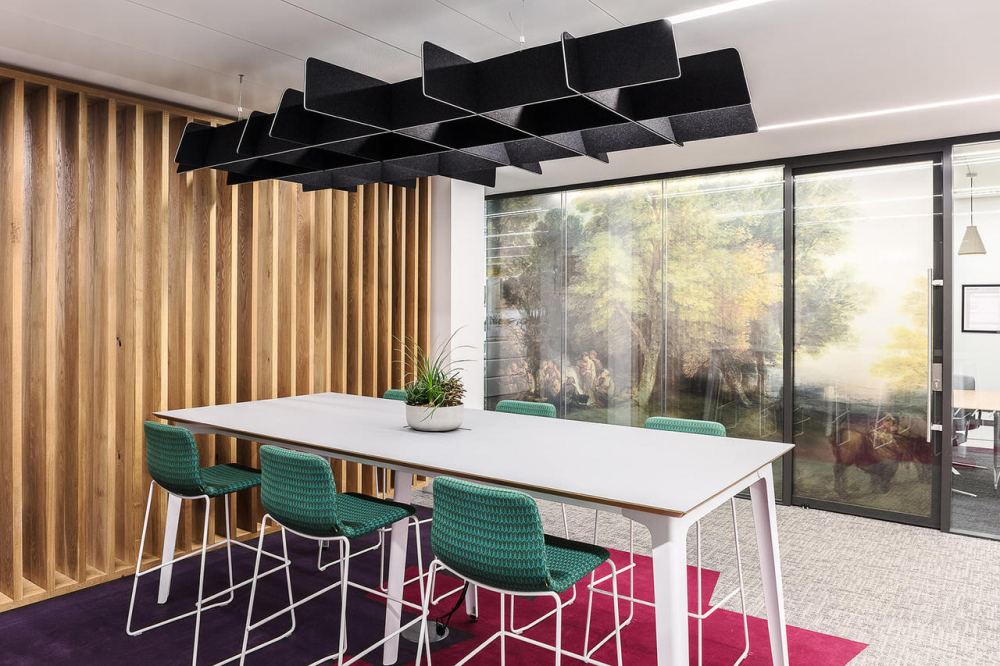Office acoustics are often an afterthought in the working environment due to the current architectural trend of the building. General materials used in establishments include glass, concrete, exposed brick and sheet metal. Although these materials can look beautiful and create fantastic aesthetics, they can create a poor acoustic environment. These hard, flat surfaces enable soundwaves to bounce around at high speeds from ceilings to furniture, so ultimately the way a building is designed can have a significant impact on noise levels within the interior.
There are several basic elements to address in order to resolve issues with noise within a building and these can include ceiling systems, sound making systems, systems’ furniture, flooring and interior design. Today’s offices have a more open plan design which can enable more collaboration within work teams and increase productivity. One of the new challenges they can bring are increased noise levels which can mean more echoing and sound to contend with. Conversion of old factories and industrial buildings to office workspaces are becoming more popular, so office acoustics must be considered in these large, open plan spaces. Much older buildings may have high ceilings, heavy concrete use and other hard surfaces which will create noise however there are many ways to improve the acoustics of a workspace whilst preserving the open plan layout.




